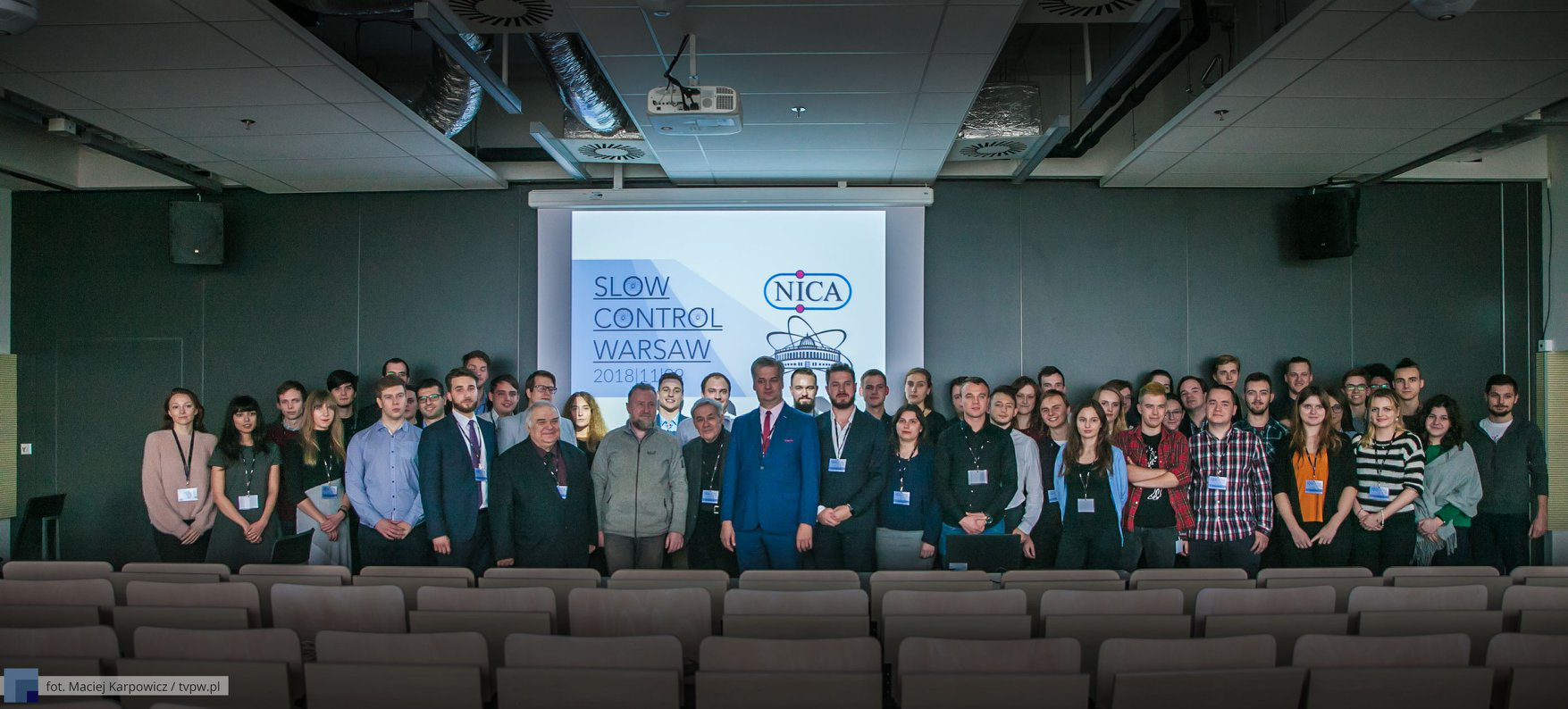Speaker
Description
Reporting the topic of student internship (summer 2018)
Programs:
Master Thesis, Bachelor Thesis, Engineering Work, Summer Students, Slow Control System, TeFeNica.
Project: NICA-MPD (Nuclotron-based Ion Collider fAcility-Multi-Purpose Detector)
Cluster Name: Robots in great physical experiments.
Senior Leader: prof. dr hab. Jan Pluta, pluta@if.pw.edu.pl
Leader: prof. dr hab. inż. Adam Kisiel, kisiel@if.pw.edu.pl
Supervisor: mgr inż. Marek Peryt, Marek.Peryt@pw.edu.pl
Topic:
Self-Balancing; Measuring Robots for Great Physical Experiments
Engineering and technical tasks:
Overview...
The Self-Balancing Measuring Robot for Great Physical Experiments, is an Project, that demonstrates how control concepts taught in engineering Group can applied. The Project, is complex closed-loop control system that autonomously balances itself. It collects feedback from multiple sensors, including the on-board accelerometer of the NI my RIO, a gyroscope, and encoders built into both motors. It uses a complementary filter and a PD Proportional Differential controller implemented in LabView to stand upright.
Base Functionality:
• The wheels are rotated by DC motors, which operate independently and revive PWM data to control their speeds.
• The encoders built into each motor measure relative position, and communicate with NI my RIO using special encoder digital lines.
• The on-board three-axis accelerometer of NImyRIO measures static and dynamic acceleration.
• The gyroscope measures rotation velocity, and communications with NImyRIO using the I2C Communication Protocol.
• A complementary filter is used on the accelerometer and gyroscope data to eliminate the High Frequency Noise HFN of the accelerometer and the Low Frequency Noise LFN of gyroscope.
• A PD controller is used to control the motor positions relative to one-another.
• NImyRIO connects to the host PC via Wi-Fi.
• The LabView code can either be run from the host PC or deployed as start-up executable.
• The Self-Balancing Measuring Robot for Great Physical Experiments is enabled by pushing the built-in button on NImyRIO.
Expansion and Teaching Options:
• Learn how the Self-Balancing Measuring Robot for Great Physical Experiments relates to controls concepts like relative robust stability, and fundamental design tension.
• Advance Challenge: Edit the LabView VI code, of the Self-Balancing Measuring Robot for Great Physical Experiments to enable it to travel on command.
Job description:
The work is an important part of the NICA-MPD Project, carried out in the international research and development centre JINR Joint Institute for Nuclear Research in Dubna (Russia), Poland has been a member since 1956 and has a significant contribution to its scientific and research achievements.
The work consists in discerning and formulating the needs of a group of specialists from Polish scientific and research institutions, SCS Slow Control System, MPD detector control system and NICA complex. The proposed engineering and technical task combines most of the characteristics of engineering and research work.
Range of tasks to be carried out by the Apprentice:
The Self-Balancing Measuring Robot for Great Physical Experiments, relates to controls concepts like relative stability robust stability and fundament takes consisting of prefabricated components and electronic modules, should be designed and developed and programmed in NI LabView. The subject is required to understand the theoretical knowledge and to analyse the topic at the theoretical and practical level. A working prototype (model) is planned. Then, technical analysis of the system and its functionality will be performed. Applications should be used when formulating subsequent technical and functional requirements, the robot's real measuring system. Define the required algorithms and write the software. The apprentice will perform tests and study the work of the finished robot. As a result of the subject matter, a working robot system should be created. At the end, you should give a 15-minute lecture in English about the work done. After the internships (in November 2018) a conference in Warsaw is planned: Slow Control System 2018, in which the Apprentice should take an active part by giving a thematic lecture. The publication of this work is planned.
Note:
It is possible to continue cooperation, for example in the form of an engineering or a master's thesis, as well as further scientific contacts.
Bibliography:
www.jinr.ru
www.ni.com
www.nica.if.pw.edu.pl
The MultiPurpose Detector – MPD to Study Heavy Ion Collisions at NICA; (CDR Conceptual Design Report) Version 1.4; Project leaders: A. N. Sissakian, A. S. Sorin, V. D. Kekelidze.
| Temat: | OK |
|---|
